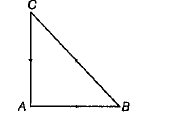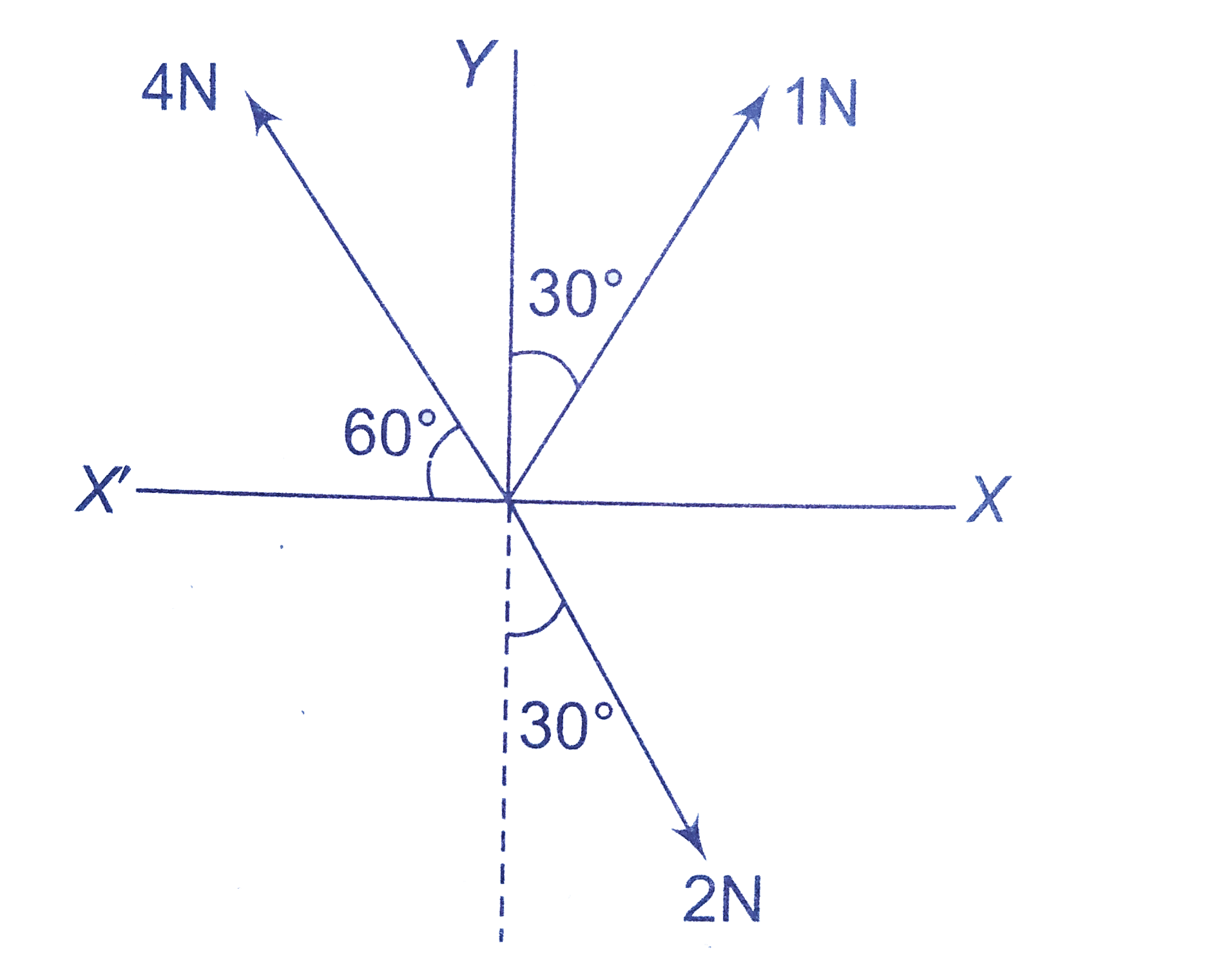Three forces start acting simultaneously on a particle moving the velocity →V. The forces are represented in magnitude and direction by the three sides of a triangle ABC (as shown). The particle will now move with velocity

greater than →v
∣∣→v∣∣ remaining changed
less than →v
less than →v.
Step by step video & image solution for Three forces start acting simultaneously on a particle moving the velocity vecV. The forces are represented in magnitude and direction by the three sides of a triangle ABC (as shown). The particle will now move with velocity by Physics experts to help you in doubts & scoring excellent marks in Class 11 exams.
Updated on:21/07/2023Topper's Solved these Questions
Similar Questions
Three forcesstart acting simultaneously on a particle moving with a velocity →v . These forces are represented in magnitude and direction by three sides of a triangle taken in the same order. What now will be the velocity of the particle ?
View SolutionThe path of a particle moving under the influence of a force fixed in magnitude and direction is [
View Solution
Knowledge Check
Three forces start acting simultaneously on a particle moving with velocity v. These forces are represented in magnitude and direction by the three sides of a triangle ABC (as shown). The particle will now move with velocity.
 Aless thanBgreater than vCv In the direction of largest force SCDv remaining unchanged
Aless thanBgreater than vCv In the direction of largest force SCDv remaining unchangedThree forces start acting simultaneously on a particle moving with velocity, ¯v. These forces are respresented in magnitude and direction by the three sides of a triangle ABC. The particle will now move with velocity
 A→v remaining unchangedBless than →vCgreater than →vD→v in the direction of the largest force BC
A→v remaining unchangedBless than →vCgreater than →vD→v in the direction of the largest force BCThree forces start acting simultaneously on a particle moving with velocity, ¯v. These forces are respresented in magnitude and direction by the three sides of a triangle ABC. The particle will now move with velocity
 A(a) less than →vB(b) greater than →vC(c) |v| in the direction of the largest force BcD(d) →v, remaining unchanged
A(a) less than →vB(b) greater than →vC(c) |v| in the direction of the largest force BcD(d) →v, remaining unchanged
Two force in the ratio 1:2 act simultaneously on a particle. The resultant of these forces is three times the first force. The angle between them is
View SolutionThree forces are acting on a particle as shown in the figure. To have the resultant force only along the Y-direction, the magnitude of the maximum additional force needed is

View SolutionForces proportional to AB, BC and 2CA act along the sides of triangle ABC in order, their resultants represented in magnitude and direction is
View SolutionForces proportional to AB, BC & 2 CA act along the sides of triangle ABC in order, their resultant represented in magnitude and direction as:
View SolutionThe force on a charged particle moving with a velocity →v in a magnetic field →B is :
View Solution
